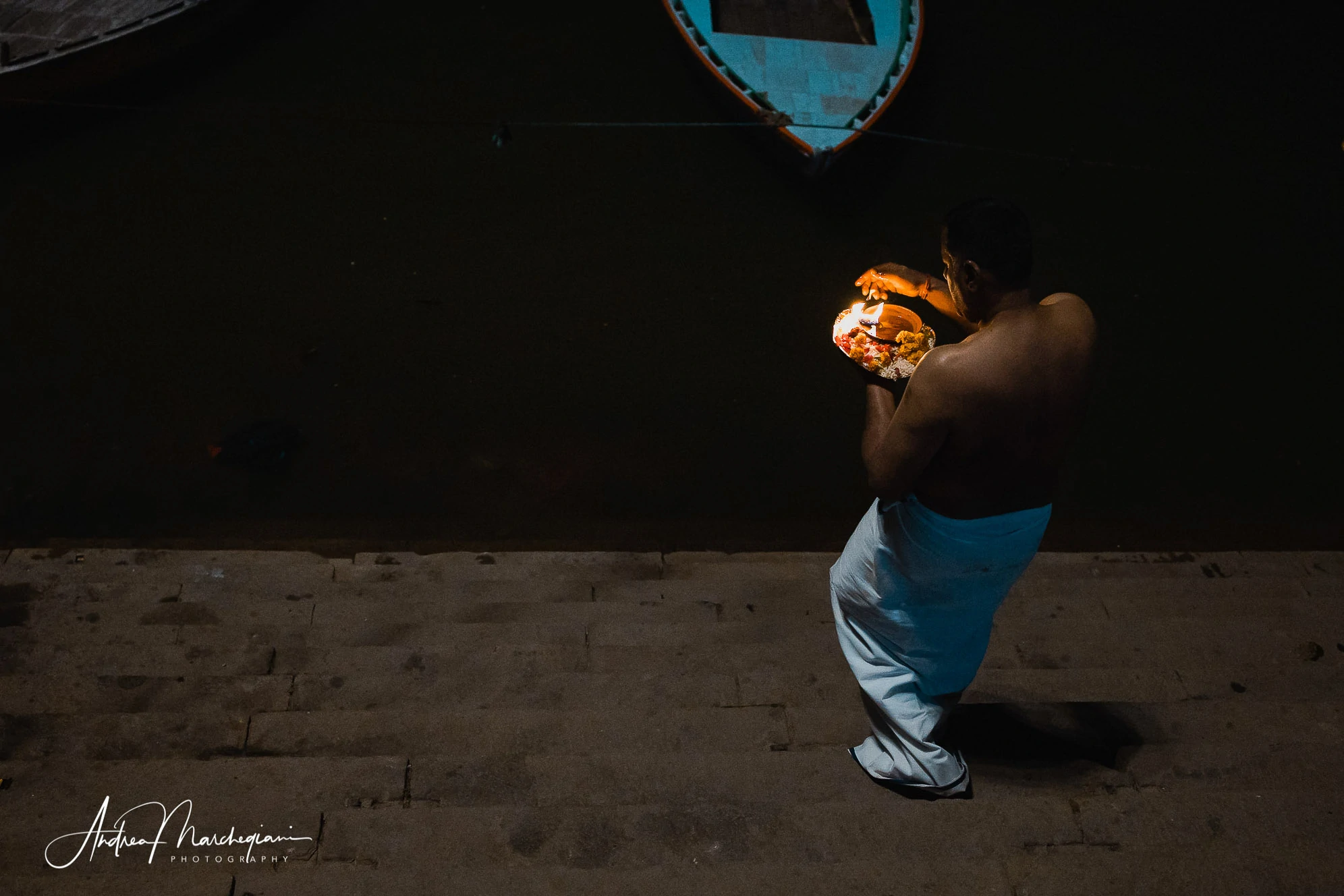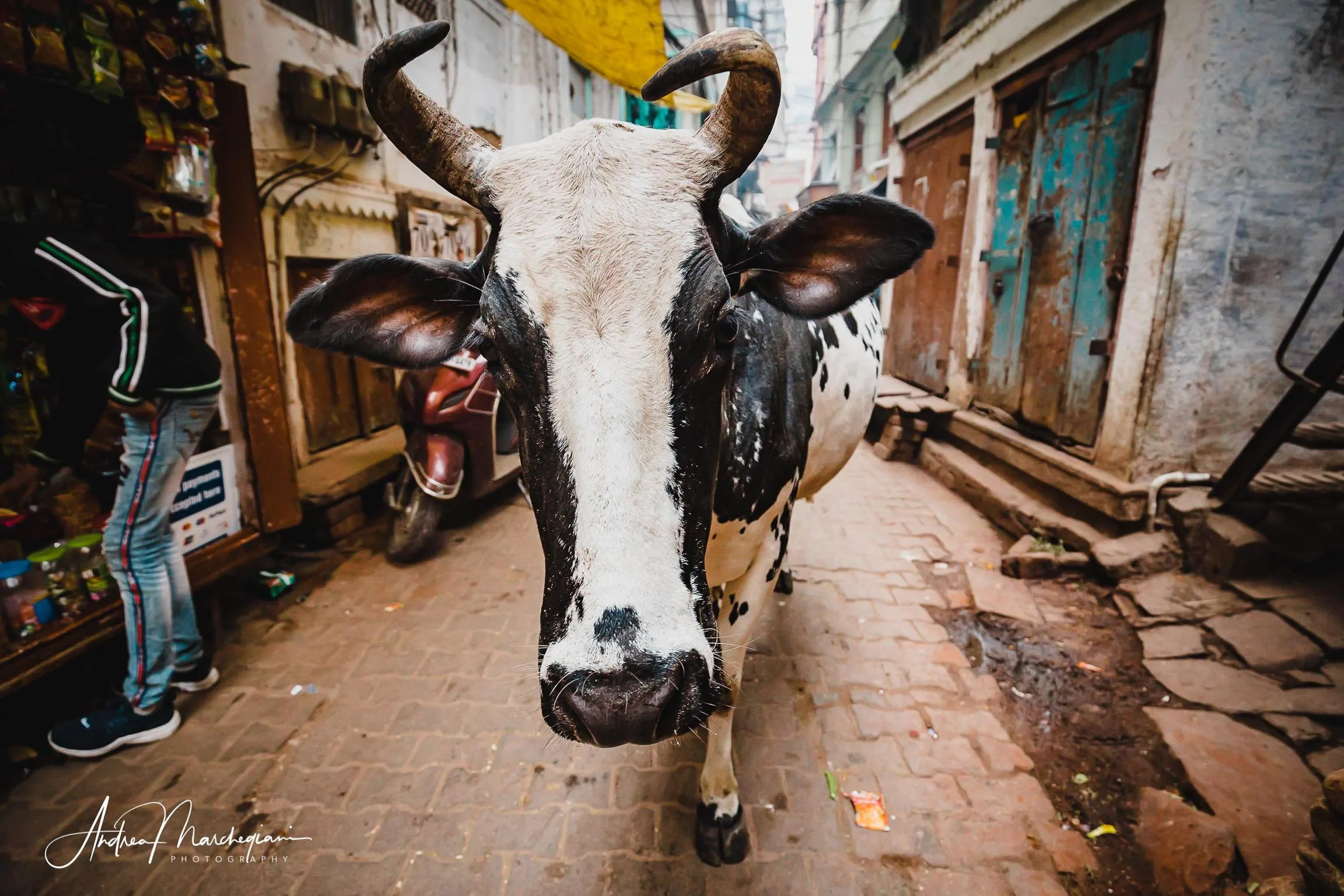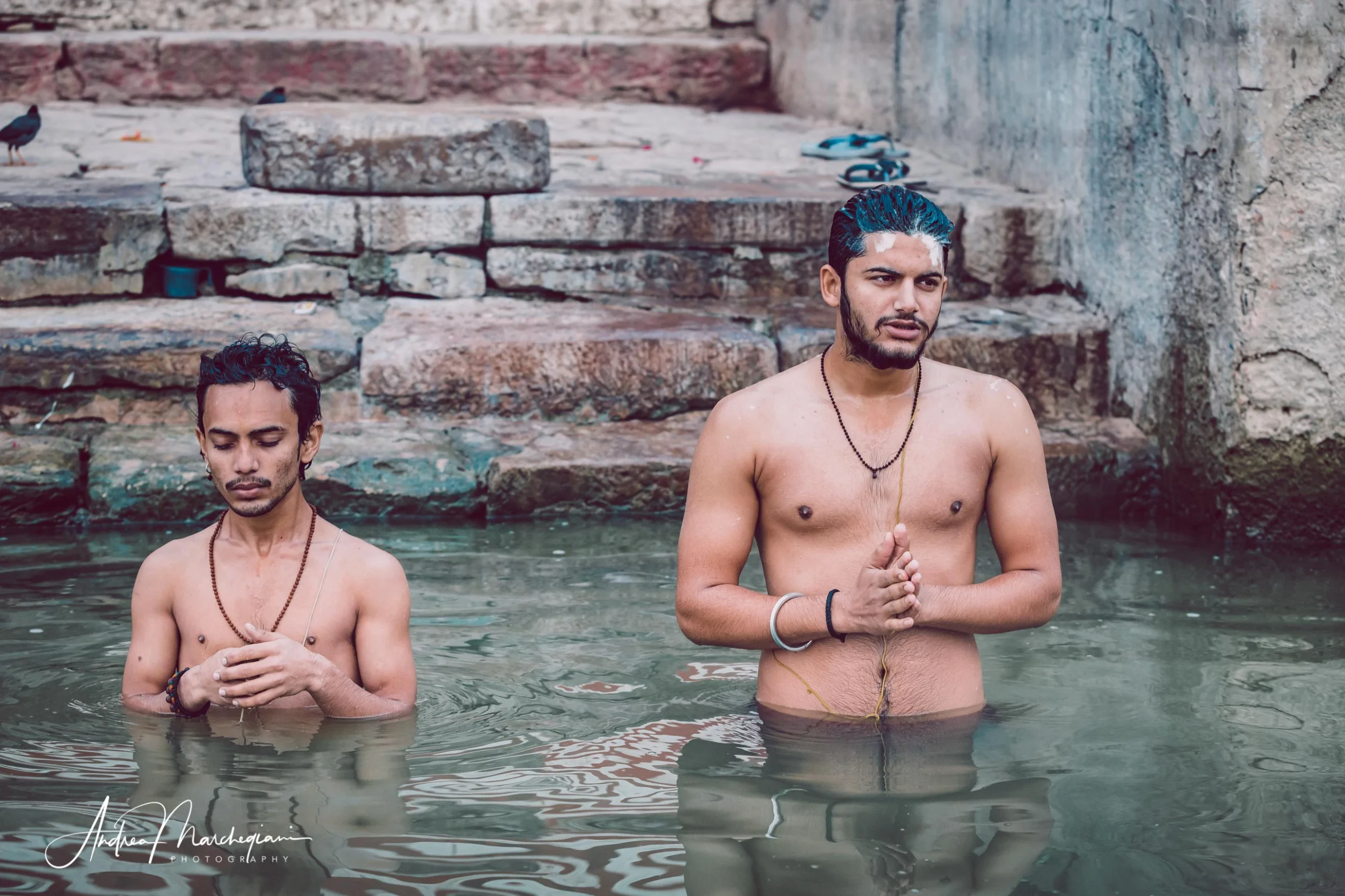
- Home
- Photo Galleries
- Portrait Photography
- Landscape Photography
- Street Photography
- China
- Ethiopia
- India
- Holy Ganges
- Varanasi
- Varanasi Ganga Aarti
- Varanasi, Manikarnika Ghat
- Varanasi Streets & Alleys
- Varanasi Demolition
- Varanasi Fruit Market
- Sarnath
- Brick Kilns
- Tamil Nadu, Chennai & Mamallapuram
- Tamil Nadu, Fort Tirumayam & Madurai
- Tamil Nadu, Tiruvannamalai & Thanjavur
- Kerala, Munnar
- Kerala, Peryiar
- Kerala, Backwaters
- Kerala, Kochi
- Kazakhstan
- Myanmar
- Senegal
- Uzbekistan
- Travel Blog
- China
- Ethiopia
- India
- Tamil Nadu & Kerala
- Varanasi
- Whato to do in Varanasi
- Varanasi Life along the Ghats
- Varanasi Death along the Ghats
- Varanasi Ganga Aarti Ceremony
- Varanasi demolished to honor Shiva
- Varanasi Fruit Market
- “Varanasi, A Journey into the Infinite”
- Sarnath
- All about River Ganges
- Holy Shit. All about Indian Cow Dung
- Clean India Project
- Brick factories
- Tilaka, pundra, bindi: what is the mark on Indian foreheads?
- Kazakhstan
- Mongolia
- Ulaanbaatar, the coldest capital in the world
- What to do in Ulaanbaatar
- Chinggis Khan Museum, 6 floors of Mongolian history
- Gorkhi-Terelj National Park and Bodgkhan Natural Reserve
- Altai Mountains, Things to do in Olgii and Sagsai
- Living with the Eagle Hunters
- Sagsai Eagle Festival
- Navrus Festival
- Xöömej, Mongolian throat singing
- Mongolian Food
- Myanmar
- Senegal
- Uzbekistan
- Latest Posts
- Photography Blog
- About
- Prints
If you are looking for a deeper meaning, visit the holy city of Varanasi, in the state of Uttar Pradesh. Here thousand-year-old pyres burn the bodies of the dead to free them from the cycle of rebirth; here pilgrims plunge into the river Ganges to purify their souls and the sacred cows are guarded with kindness and care. Get lost in the city’s vegetable market and finish your tour with a visit to the Chaubepur brick factory and a quick stop at Sarnath Buddhist shrine, where Buddha began preaching after reaching enlightenment.
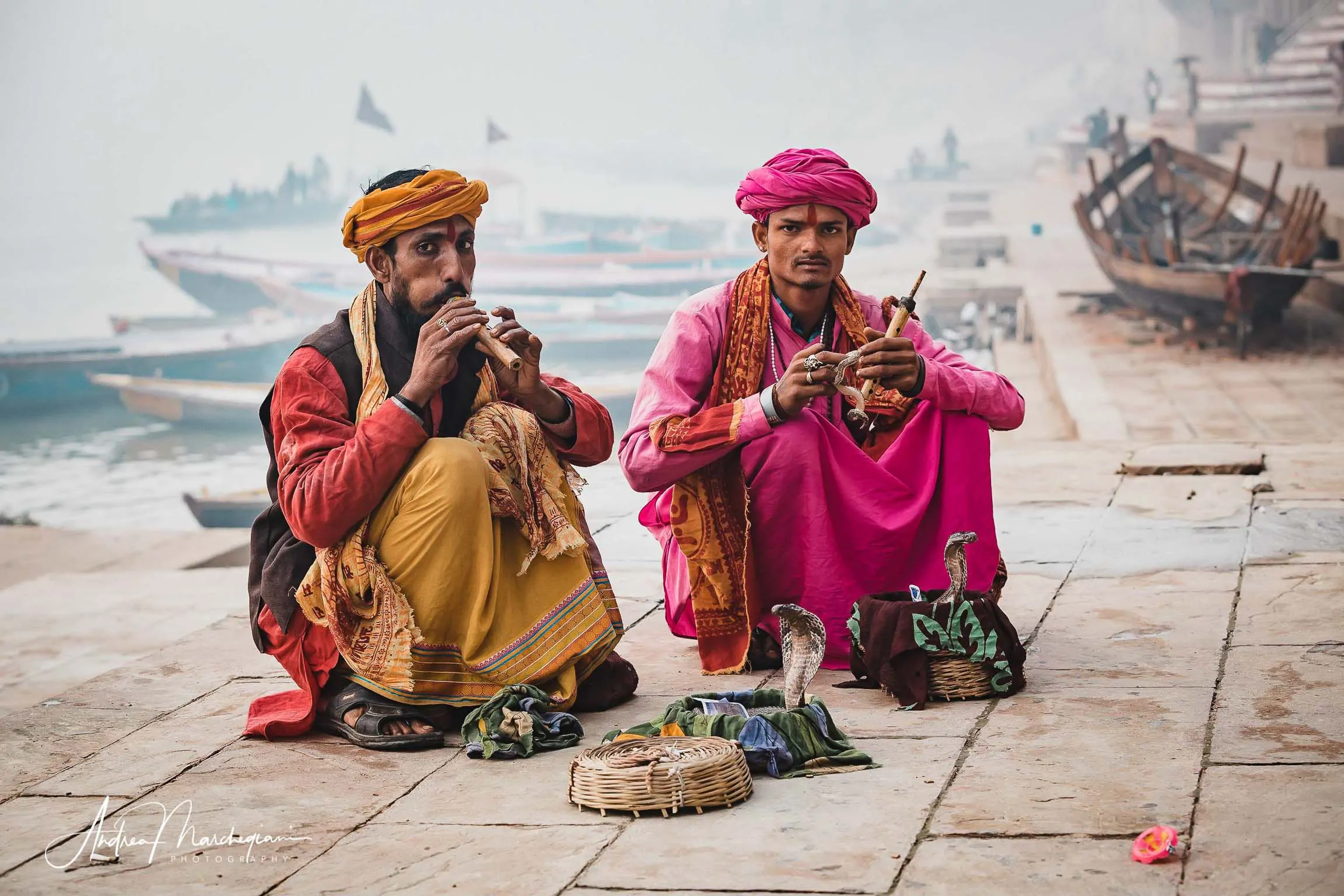
Share with your friends:
What to expect from a visit to Varanasi
It’s all wonderful in Varanasi. If you have never heard of this Indian city, you will hardly believe what you are about to read.
Inhabited for about 3,500 years, Varanasi, or Benares, is one of the oldest human settlements in the world. The city is built in the bend of the Ganges and Hindu mithology wants it to be the place where the whole world was created and the only one that will survive its destruction. This makes Varanasi the most sacred city for Hindus.
About a million pilgrims go there every year to make ablutions in the Ganges and thus wash away their sins.
Not only that, Hindus are convinced that dying in Varanasi and being burned along the western bank of the river allows them to escape samsara, the cycle of reincarnations.
To cease the rebirth and suffer the pains of life is the ultimate goal of the Hindu spiritual path. In fact, only pure souls can be definitively disembodied and be reunited with the cosmic whole from which they come. Reaching this level of spiritual awakening requires many life cycles, in which one can progress and regress, which would lead to being embodied in lower forms of life. Dying in Varanasi offers the advantage of completing this process once and for all.
This is why many Indians go to Varanasi in their old age and wait for the moment of their passing away. They confide they will reunite with Ganga, the mother goddess who gives life and feeds the waters of the river Ganges.
Given these premises, no one arrives to Varanasi by chance. Hindus are very clear about the purpose of a visit to the city, as are foreign travelers who go there. Tourists looking for leisure will hardly choose Varanasi as their destination: the city has a lot to offer, but only if you really want to witness very intimate and often controversial aspects of the Hindu profession of faith. In Varanasi, life and death hold hands, as sisters. It is impossible to separate the two aspects and it is necessary to open heart and mind to understand this reality without letting emotions become overwhelming or fall into easy judgements.
I stayed in Varanasi for a week and, as I left town, I regretted not spending more time. In fact, although the main attractions can be visited in a couple of days, the extraordinary nature of what happens there has continued to attract me like a moth to the flame. I wish I could have walked the ghats longer or watched the cremations for hours at dawn.
Because Varanasi is not only an Indian city, but a real interdimensional portal.
If you wish to embrace a reality so different from our own, here are my tips on what to see in Varanasi.
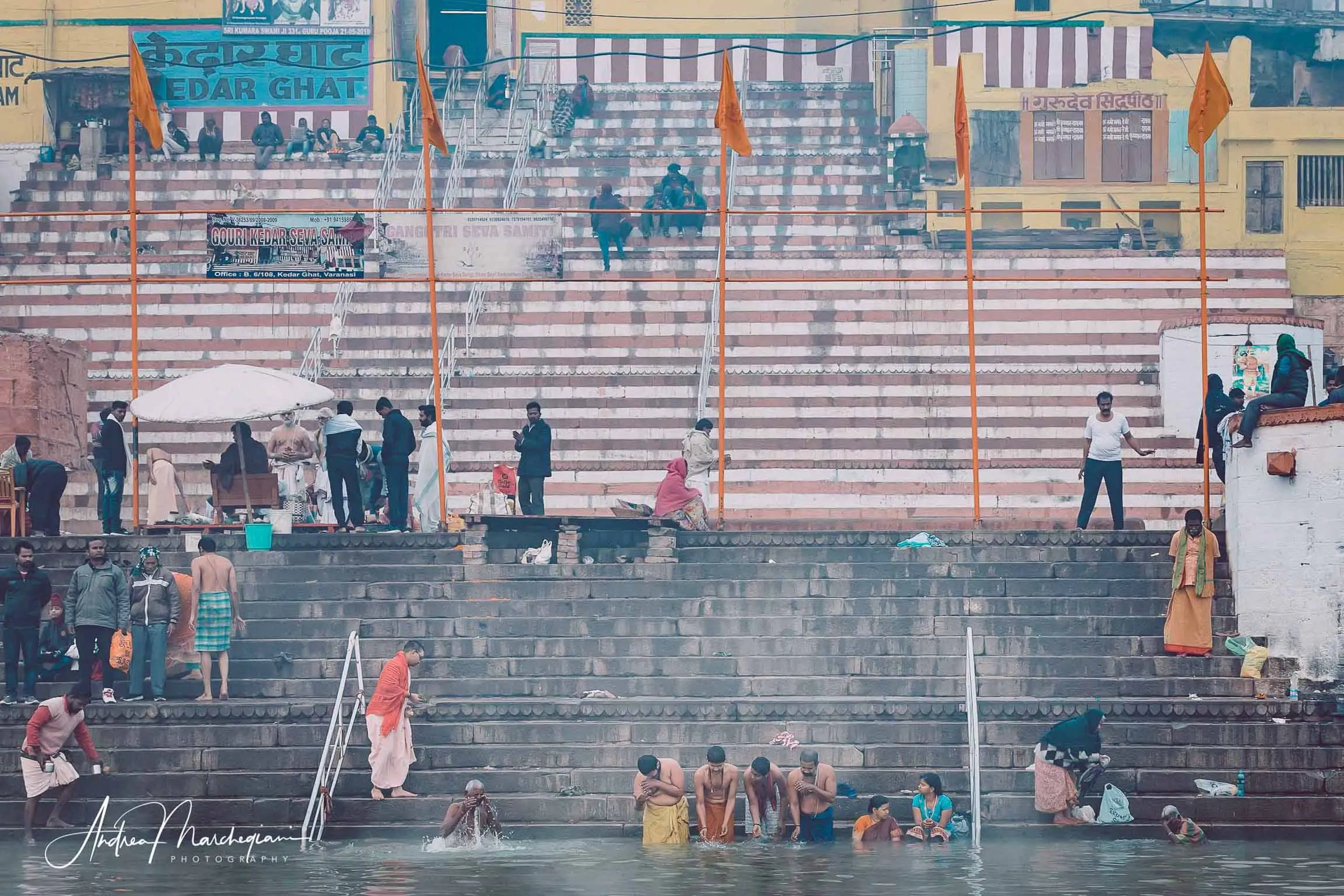
1. Walking along the 84 ghats
Varanasi is located on the west bank of the Ganges. The river can be accessed by steps called Ghats. There are 84 ghats in all and they cover a distance of about 6 km. I recommend you to walk until you cover them all.
The scenes of daily life and religious devotion that take place there are absolutely the most extraordinary thing to watch: pilgrims who immerse themselves and pray; sadhus meditating or practising yoga; women doing laundry and drying clothes on the ghat steps; men shampooing and soaping in the river; children and adults enjoying splashing water for fun.
Privacy is a concept little practiced in India and Varanasi is no exception: life takes place along the banks of the Ganges!
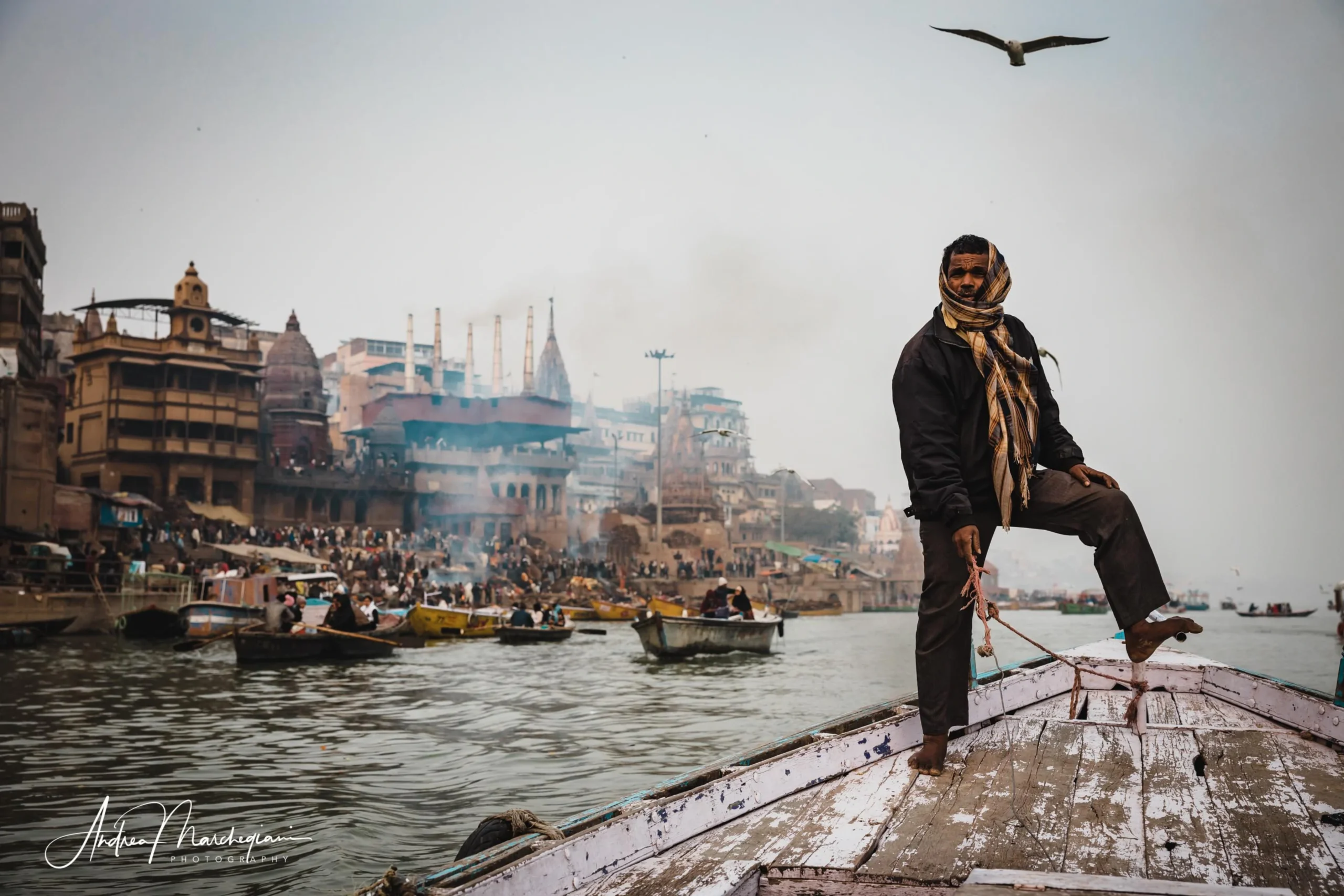
2. Take a boat ride on the Ganges
As soon as you reach the ghats in Varanasi, someone will approach you for a boat trip. Don’t be wary and accept!
The view of the city from the Ganges is sensational, both at sunrise and sunset. You can also use the boat as a taxi, when you are tired of walking. Bargain a bit on the price, but don’t overdo it.
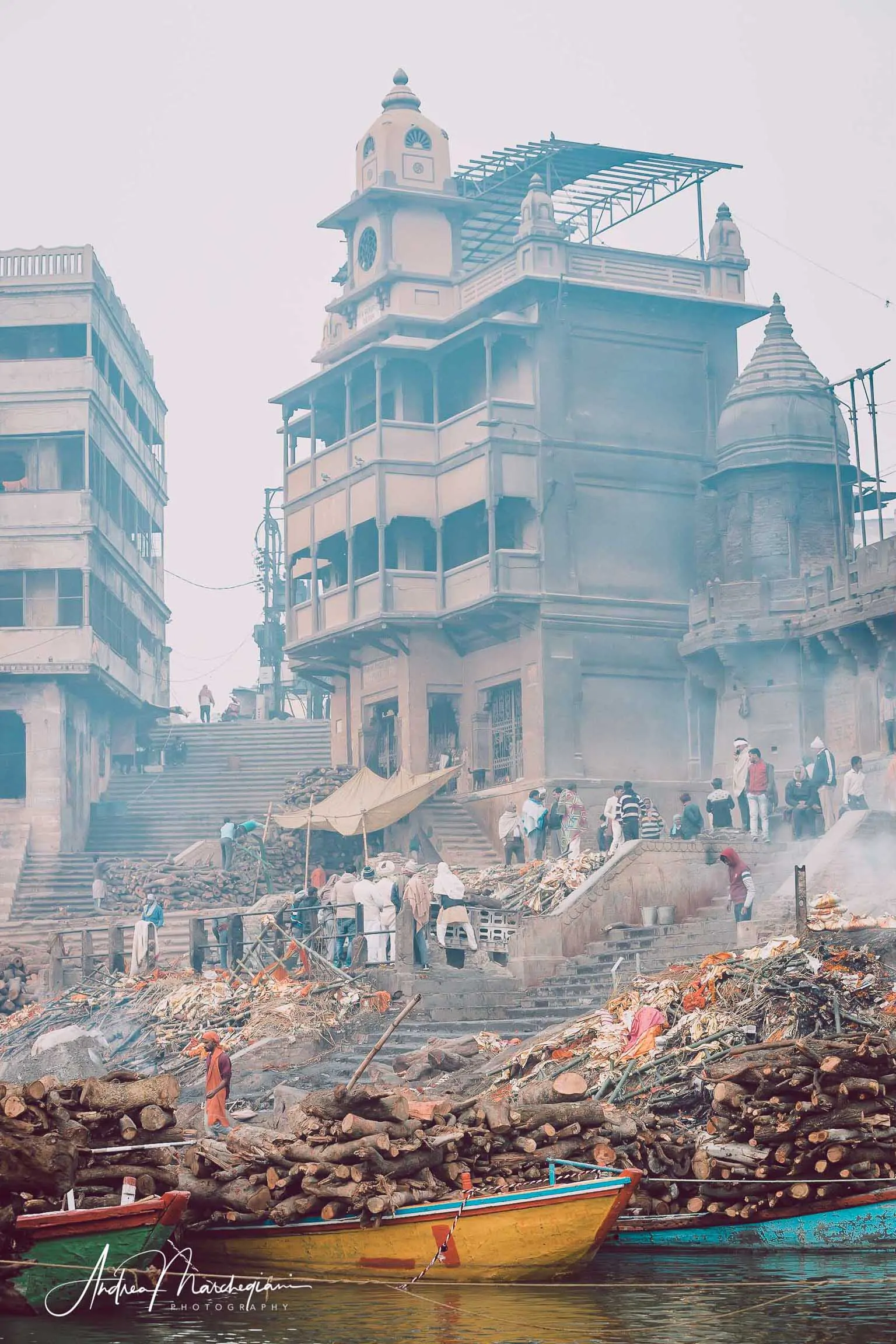
3. Watch the pyres burn at Manikarnika Ghat
Many sacred cities have arisen over the centuries along the banks of the Ganges, but only in Varanasi the crematory ovens are positioned in the urban center.
The most important cremation ghat is Manikarnika Ghat, where wooden pyres have been burning for millennia. Each cremation requires about 3 quintals of wood: the roads leading to the Ghat are filled with piles of logs that shopkeepers sell to the relatives of the deceased.
A tourist can hardly observe the pyres up close, let alone take pictures (to do this, I needed a special permit). Pay attention to the little rascals who approach you asking for a donation and above all try to have the maximum respect if you decide to approach the Ghat.
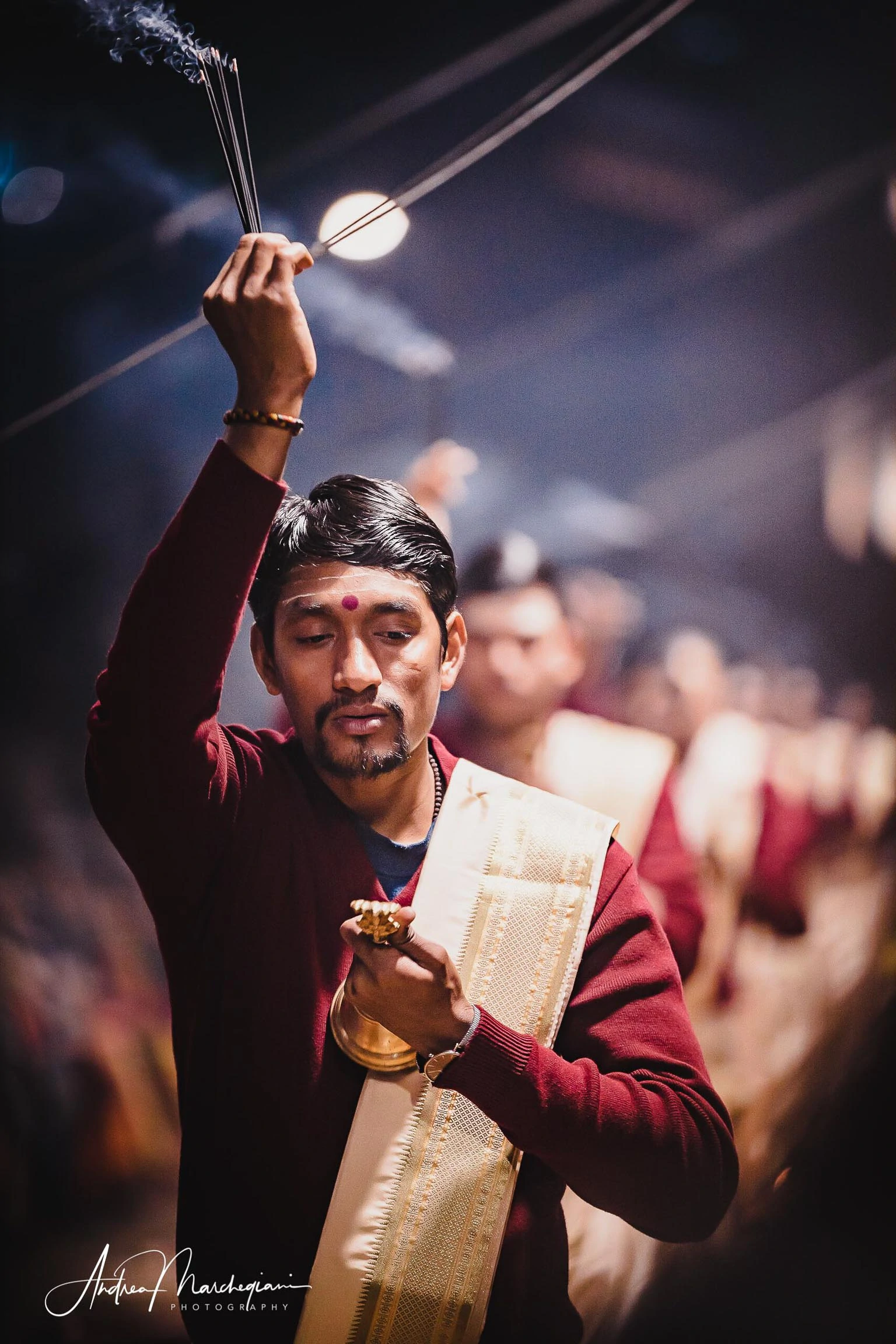
4. Attend the Ganga Aarti ceremony
Every evening, in Varanasi, you can attend a majestic ritual of thanksgiving to the river goddess, Ganga. It’s called Ganga Aarti and it takes place on the Dasaswamedh Ghat.
Here are a few notions to help you understand its significant cultural value: Ganga is the Hindu deity from which our entire galaxy, the Milky Way, originated. Hindu traditions displayed it as a river of stars. A drop fell on the earth, generating the Ganges, which gave life to the whole world.
The ceremony is followed by the entire community: some fill the steps of the square, some assist seated on boats anchored a few metres from the shore. The Pandits, the priests who perform the rite, dance to the frenetic rhythm of drums, while the air is filled with the scent of sandalwood.
The faithful light candles and put them on the riverbed, hoping that the goddess Ganga will accept their demands and fulfill them. I advise you to attend several times the Ganga Aarti, from different points of view. At first, you might feel stunned by the intensity of the sounds and smells, but I assure you that in the end, it will conquer you.
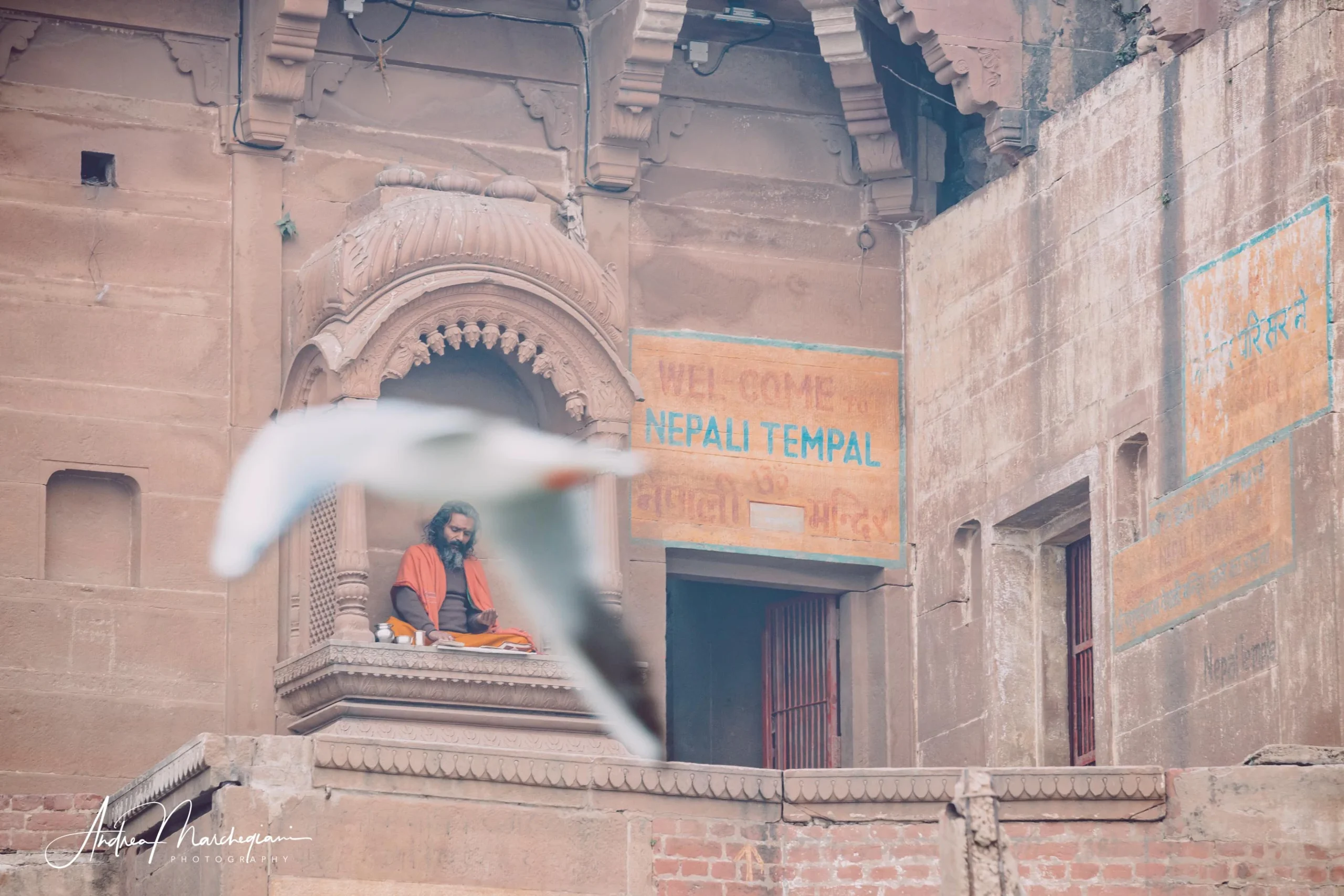
5. Visit the 6,000 temples of Varanasi
Varanasi is a sacred city and, as such, teems with temples, altars and aedicules. An Indian saying reads: “No one knows whether Varanasi has more temples in houses or houses in temples!”
Visit the main religious sites, but do not neglect to find the minor altars. The two most famous temples are the Nepali Temple and the Golden Temple: the Nepali Temple is one of the oldest Shiva temples in Varanasi. It was built in the 19th century by the King of Nepal and is a replica of the Pashupatinah Temple in Kathmandu. It is located along the Ganges River, just before arriving at the Manikarnika Ghat. To access it you pay an entrance and climb the high and steep steps. The Ganges looks amazing from the temple.
The Golden Temple, or Kashi Vishwanath, is one of the most sacred places in the city. It is reserved only for Hindus, so tourists are not allowed. You can still see it from the outside. I could not do this either, because it was guarded during the controversial and questionable work of demolition involving the blocks surrounding the temple.
If you walk away from the ghats and move into the alleys of the city, you will discover that Varanasi is a maze of intersections and winding streets which can make you lose your orientation. The most amazing thing is that every route you take will give you new glimpses: you will come across thousands of small shops and local craft shops. If you pay attention, you will discover that Varanasi hides over 6,000 temples and small altars: each house has its own Shiva altar, often carved out on the outside walls of the building; at each crossroads you can admire small altars, built in the most unthinkable points, each with a small lingam to venerate.
In Varanasi you will soon become familiar with these strange statuettes: the lingams symbolize the phallus of Shiva, supported by a concave shape that depicts the vagina of his wife Parvati. No, it is not a joke and be careful not to make fun of it: lingam is one of the most beloved symbols for over a billion Hindus, like the crucifix for Christians.
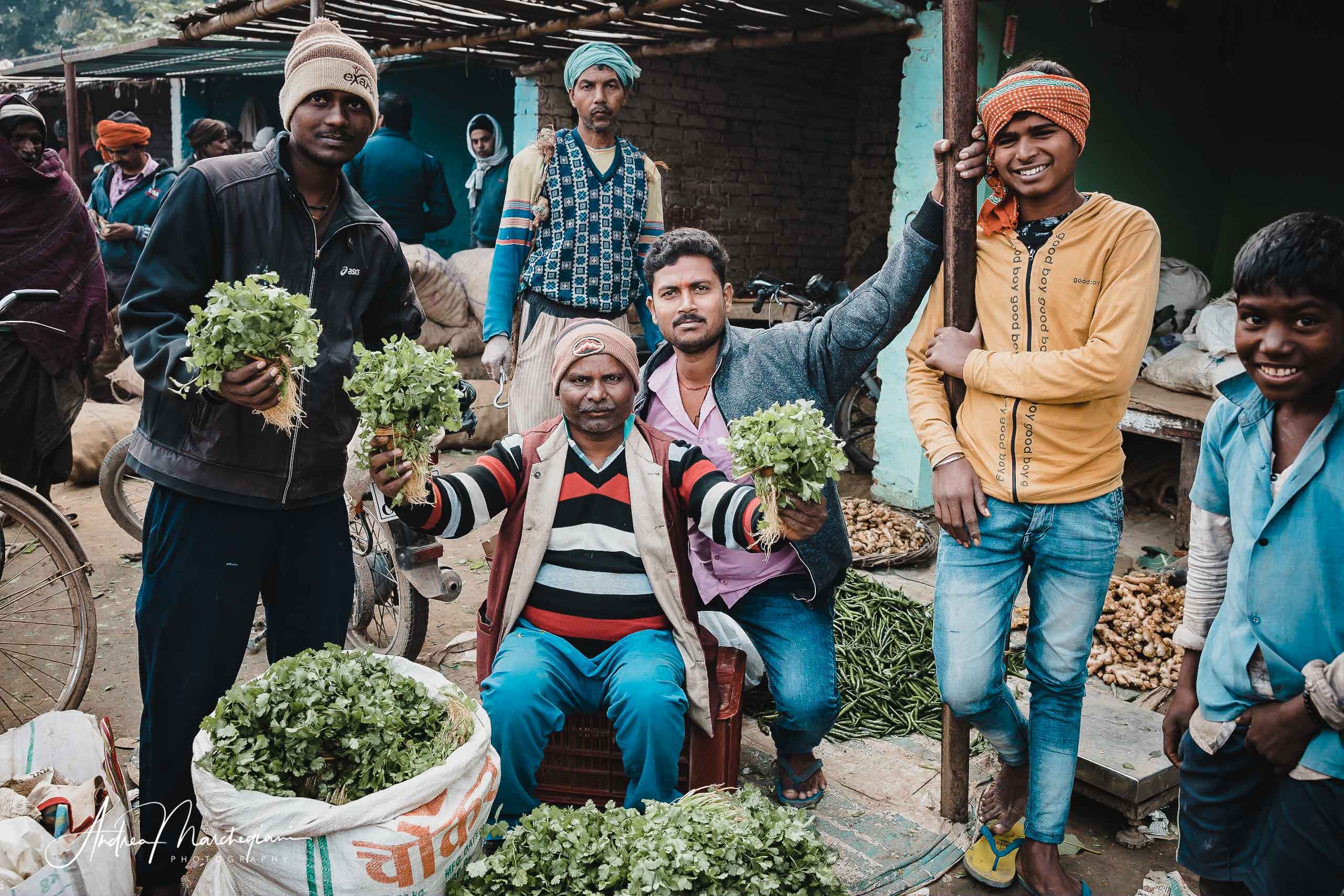
6. Spend some time in the Fruit Market
In Varanasi 80% of people are vegetarian. There are two main fruit and vegetable markets in town: these are very popular and interesting places to visit. I spent a few hours in the Panckoshi market: the greengrocers are really friendly and, considering the selfie-mania that rages in India, you will certainly enjoy taking pictures with them!
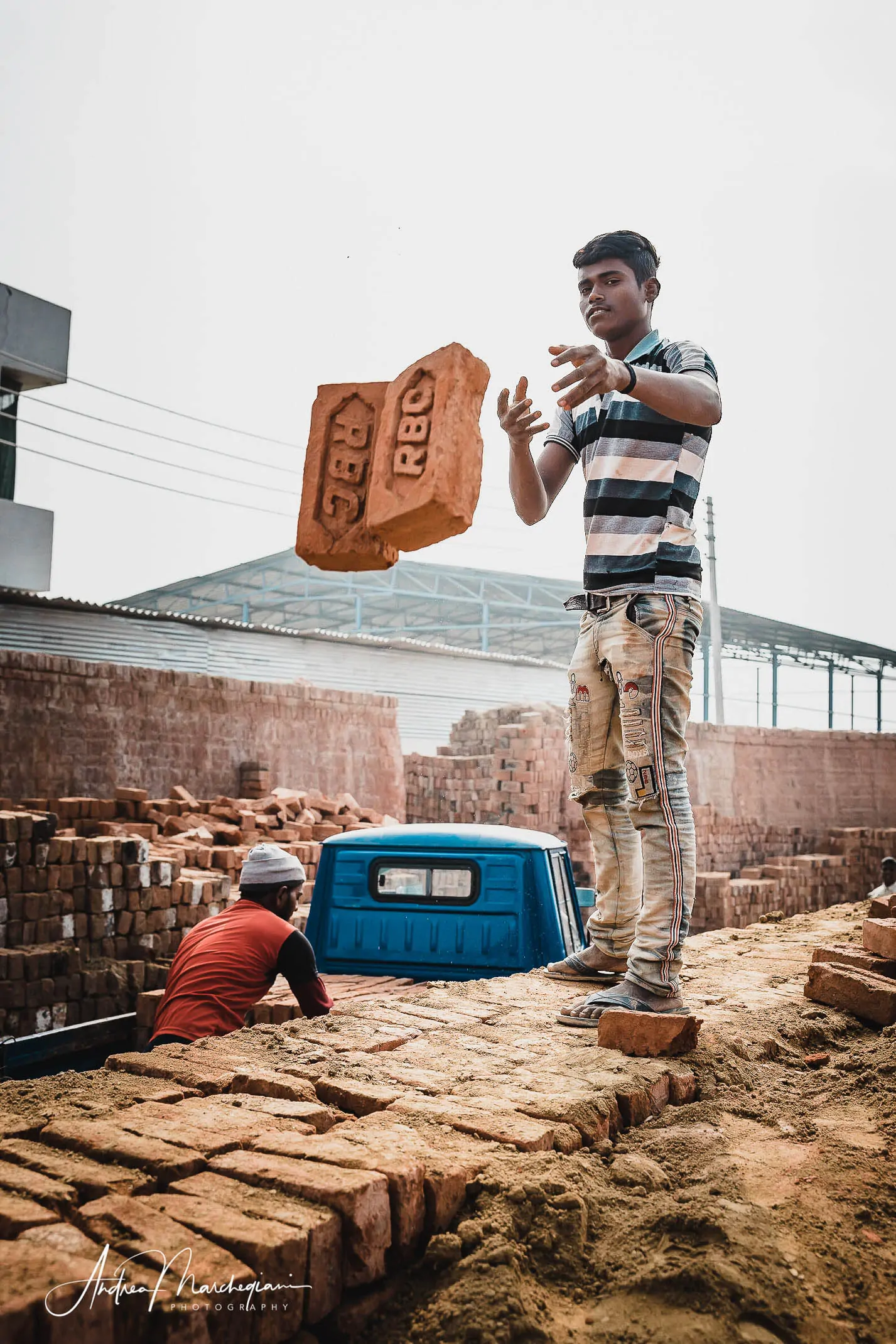
7. Visit a brick factory
If you have an extra day, ask a local guide to take you to see a brick factory.
I visited Chaubepur, a one-hour taxi ride from Varanasi, and it was an amazing experience. You can watch the traditional process of moulding and firing the typical red clay bricks that have been used for centuries in Indian construction.
A few years ago, human rights associations denounced the precarious working conditions in factories and the exploitation of underpaid minors, casting a sinister light on this working reality. There is still a long way to go, but I must say that in Chaubepur I found a very cheerful and positive reality, so I recommend a visit!
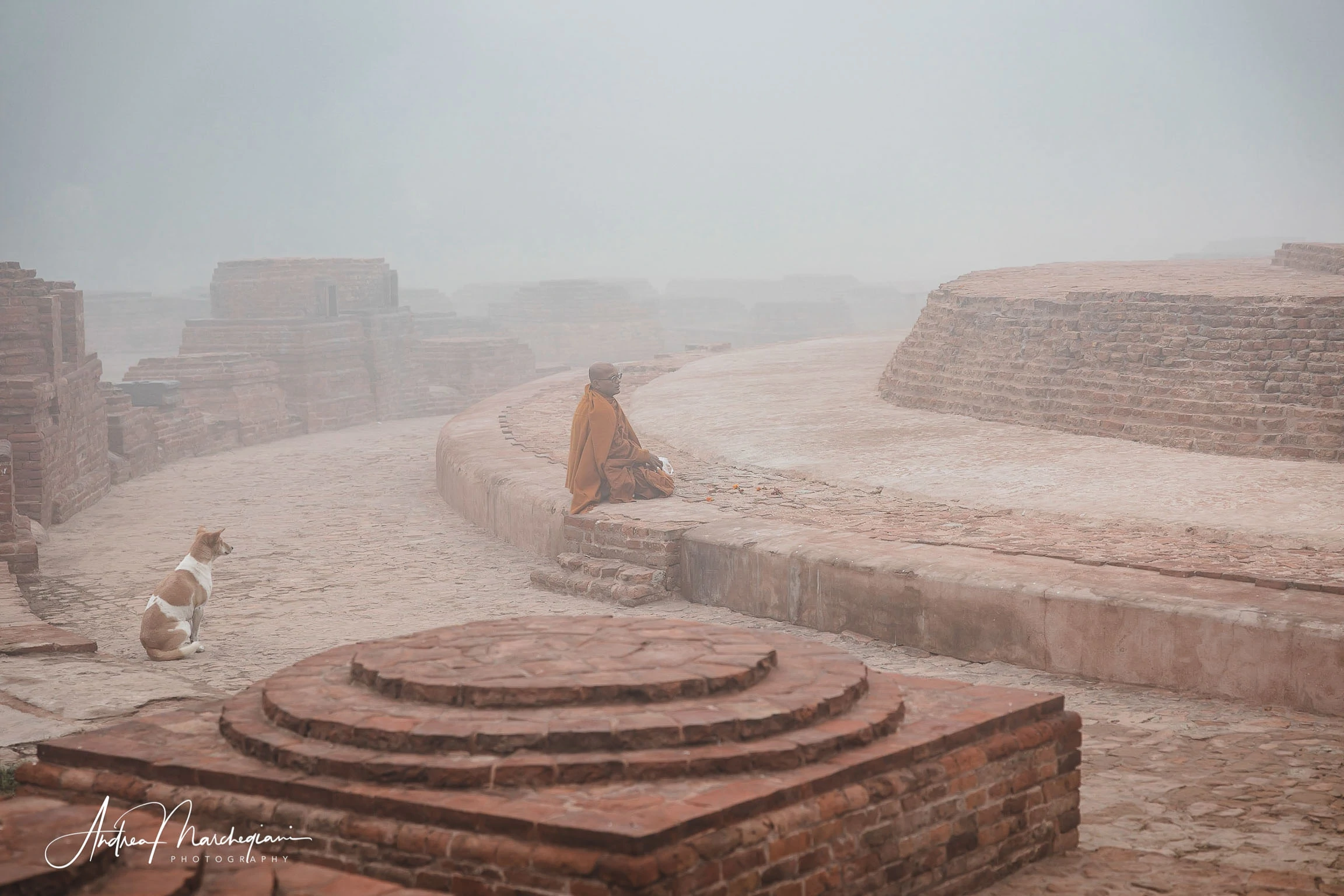
8. Visit Sarath Buddhist Sanctuary
In Sarnath, a few kilometers north of Varanasi, there is an important Buddhist shrine. Here, in fact, Gautama Siddhartha the Buddha began his preaching and exposed to his followers the sermons that contain the core of Buddhist doctrine: the four noble truths and the eightfold path.
The sanctuary of Sarnath, with its large archaeological park with stupas and ruins of temples, is certainly worth a visit, but be careful not to confuse it with the neighboring cheap temple.
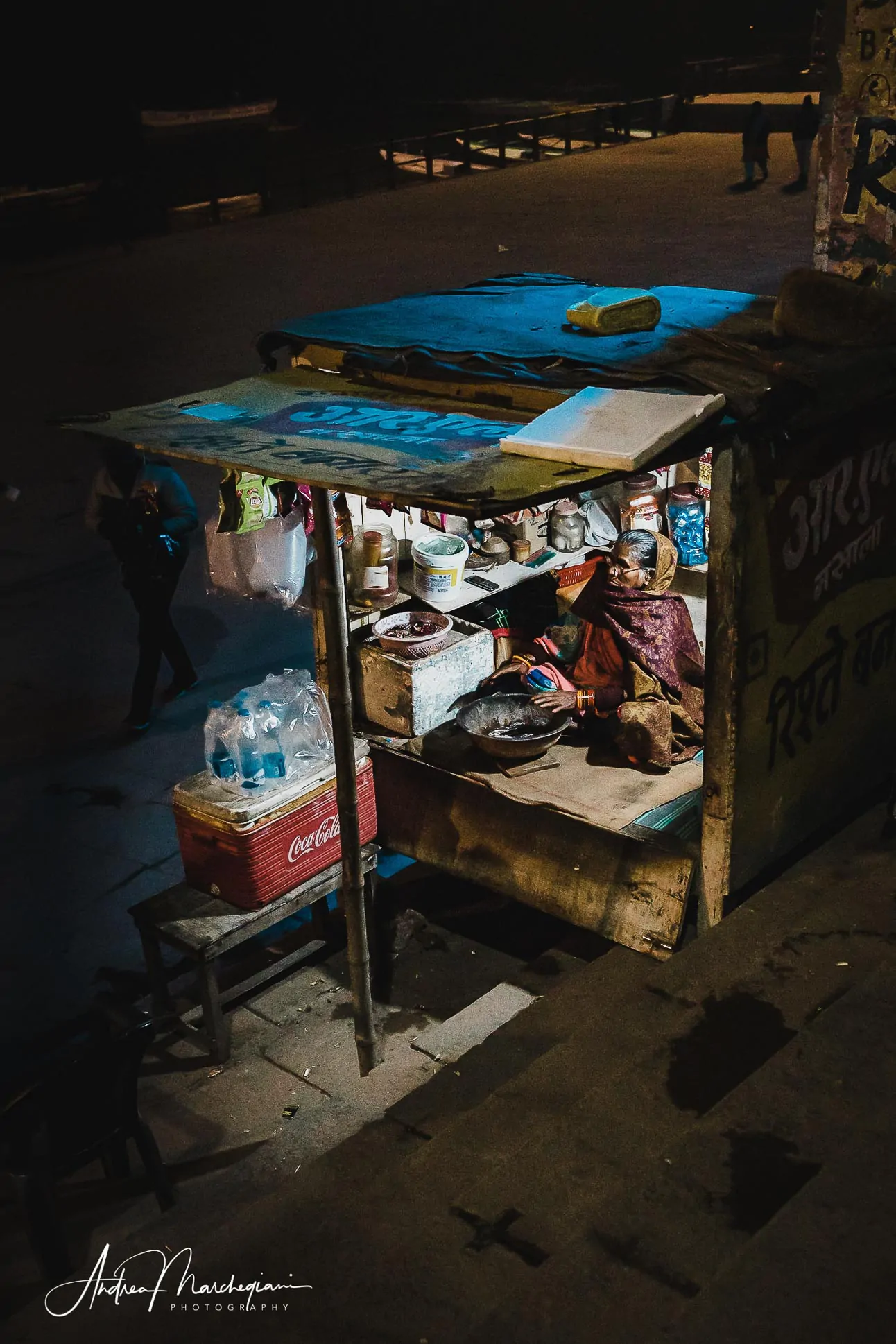
9. Try local food
Indian food is notoriously rich and tasty. If you don’t like spicy food, you can always ask to prepare a dish without spices or chili. I didn’t get any results, but it’s always worth a try!
In Varanasi the most touristy (and expensive) restaurants are on the ghats: I recommend them because they offer typical Indian dishes to safe hygienic standards. I managed to enjoy everything without having intestinal problems.
If you love some adventure and have an invincible intestinal flora, try lassi, a typical yogurt and spice drink, or enjoy street food served in small portions by street vendors. I didn’t dare so much, but I met travellers who were crazy about it and had not suffered in terms of health.



